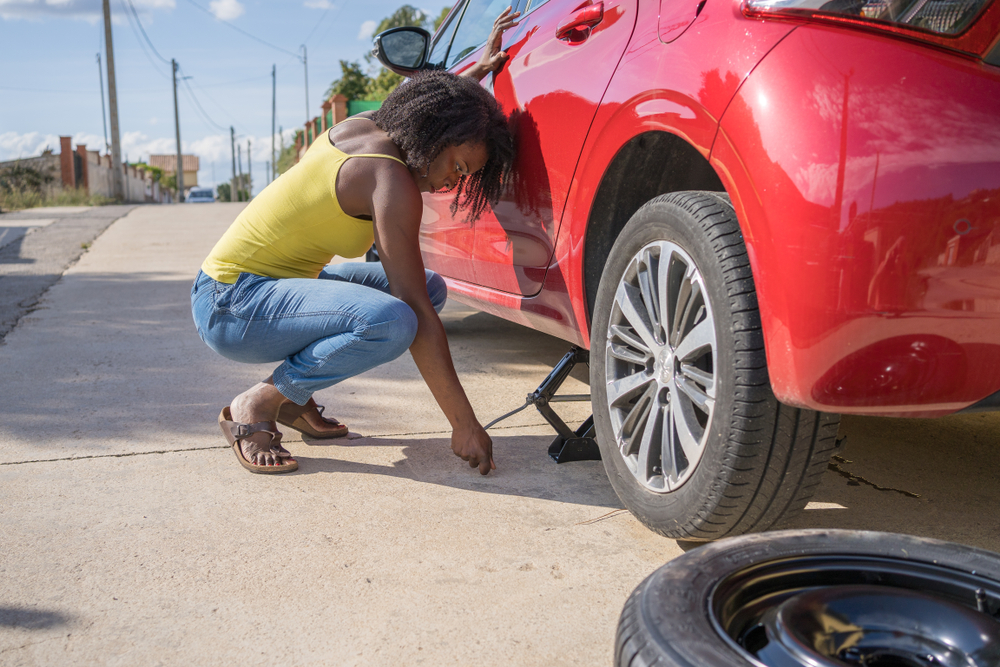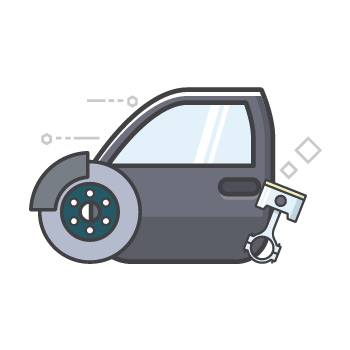How to Change a Flat Tyre in Eight Simple Steps
by Carolyn Lee Jan 1, 2024

When owning a vehicle, you efficiently manage some tasks but must figure out others. Changing tyres might seem challenging, especially if you don’t know the steps involved. Our Yello How-To articles aim to raise awareness and provide solutions to everyday living tasks. So, we’ve found a few steps to guide you with changing a tyre.
When do you need to change your tyres?
Most people will change tyres if they have a flat tyre, damage, thread wear, a puncture, or old tyres. Most vehicles come equipped with a spare tyre and tools, which can be helpful if you get a puncture or flat tyre.
Tools needed to change a tyre.
Getting a flat tyre can happen unexpectedly anywhere and at any time. So, ensuring you have the tools you need in the vehicle is wise. You can prepare for the unexpected by checking your tyre pressure before long trips, every month, and before carrying an extra load.
Your kit should include a flashlight with working batteries, a jack, a lug wrench, a vehicle owner’s manual, and a fully inflated spare tyre. A good idea is to ensure you have a reflective jacket, warning triangle, wheel chocks or a short wood plank, and gloves.
Eight steps to guide you with changing your tyres.
Be safe.
Do not stop the vehicle abruptly when you have a puncture or flat tyre. Try to reduce your speed and look for somewhere safe to stop. Put on your hazard lights to indicate to other drivers that you are having an emergency. Look for somewhere safe to park and change the tyre.
If you can’t find a parking lot, look for a level, straight stretch of road with a wide shoulder to prevent the vehicle from rolling. Avoid stopping on a curve, as this can make it difficult for oncoming traffic to see you. If there are passengers in the car, let them get out.
Get what you need.
Ensure your emergency brake is engaged, and read your vehicle’s manual for guidance. Get the tools you will need to start changing the tyre. You can use the chocks or the short wood plank to prevent the vehicle from rolling. Place the chock on the opposite wheel to the one with a puncture.
Loosen the lug nuts.
You can use the lug wrench to remove the hubcap or consult your manual for guidance. Loosen the lug nuts while the car is on the ground. Turn the lug nut counterclockwise and apply pressure to break the lug nut’s resistance. Do not remove the lug nuts altogether.
Position the jack under the vehicle.
Most vehicle frames have moulded plastic on the bottom with a cleared area of exposed metal for the jack. Try placing the jack beneath the vehicle frame alongside the flat tire. Consult the owner’s manual for directions to avoid damage and safely lift the car.
Raise the jack.
You can prevent the jack from settling under the vehicle’s weight and coming off balance by putting a small cut of wood beneath it before raising the car. When the jack is positioned correctly, raise the vehicle until the flat tire is about six inches above the ground. Please do not put any part of your body under the car during or after raising it with the jack.
Remove the lug nuts and the tyre.
Unscrew the lug nuts and place them safely inside the door pocket or on the car floor. Hold the flat tyre with both hands and gently pull it towards you until it slides off the hub. You can rest it on its side to prevent it from rolling away.
Mount the spare tyre.
Put the spare tyre on the hub in line with the wheel nuts and push until the lug bolts show through the rim. Then, replace the lug nuts on the bolts and tighten them by hand. You can tighten the bolts with the wrench once the vehicle is lowered.
Lower the vehicle.
Use the jack to lower the vehicle slightly until the spare tyre is in contact with the ground. Then, tighten the lug nuts with the wrench, turning clockwise. You can push down on the lug wrench with the total weight to ensure the lugs are tight. If the hubcap from the flat tire fits your spare, put it in place the same way you removed it initially. If it doesn’t work, store it with the tire. Then, lower the jack and remove it.
What else should you do?
Put the tools and the flat tyre away safely. If you have one, you can check the tyre pressure with a tyre gauge. If your spare tyre needs air, drive carefully to the next gas station to have it sorted. Remember to take the punctured tyre to the repair shop, as most spare tyres are not full-sized and should not be driven for long distances or at high speeds.
Yello is committed to helping you to find the products and services you need quickly. We encourage you to use our Find Yello listings for tyre dealers, repair services, and changing equipment.
Sources: Bridgestone, RAC, Home Depot, Continental Tires, and Jack and Jill of All Tires.








